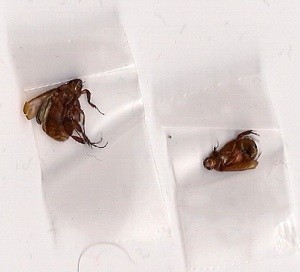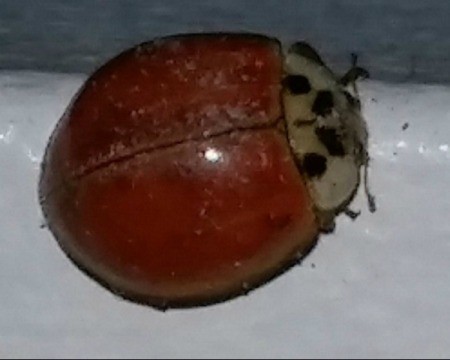 These little brown flying beetles have been climbing my screens and entering my apartment. Upon entering they slowly die within a day or two. Can you tell me what they may be? Thank you.
These little brown flying beetles have been climbing my screens and entering my apartment. Upon entering they slowly die within a day or two. Can you tell me what they may be? Thank you.
By Roy from Gorham, ME
In the south we call these June Bugs. They are basically a beetle that feeds on houseplants, grass, crops, and roots. They are also attracted by light. Other than the damage done to plants, these beetles are harmless.
If there is a green spot at the top of their backs, it looks like a Japanese Beetle. We're in Northern Illinois and have been having problems with them this year. Yech! Also doesn't look like any roaches I've ever seen. Lived in Texas, have seen several kinds. Double Yech! carol ô¿ô
The June bugs that I have seen in SD are much larger than these.
Here are the questions asked by community members. Read on to see the answers provided by the ThriftyFun community.
Can anyone identify this species of ladybug? Is this a beneficial bug or will it damage my vegetable garden?
Thanks.

It is a Multicolored Asian Lady Beetle. The picture shown is one of several dot patterns they can have. They are a beneficial biological control during the summer, in soybean fields and gardens. They were released in the Iowa to eat soybean aphids, but have become a household nuisance during fall and winter, when they invade your house-as bad as boxelder bugs.
It is an Multicolored Asian Lady Beetle. The photo shown is one of several variable dot patterns they can manifest. Deep orange is the most common color. The 19 black spots may be faint or missing. It was released in Iowa to eat soybean aphids. Now they are common throughout the US. The beetles are beneficial biological control during summer in fields and gardens. They start to appear from mid-September through October..... and become an annoying household nuisance -- well known for accumulating on the sides of buildings and invading indoors.......even worse than boxelder bugs. PLUS, the little devils will sometimes bite!! They have a distinct odor when squashed.
It is an Multicolored Asian Lady Beetle. The photo shown is one of several variable dot patterns they can manifest. Deep orange is the most common color. The 19 black spots may be faint or missing. It was released in Iowa to eat soybean aphids. Now they are common throughout the US. The beetles are beneficial biological control during summer in fields and gardens.
I see that the eat aphids, so I will treat them as a friend. Thanks for the information.
Hello !
Indeed, it is Harmonia axyridis the asian ladybug. They do eat aphids but unfortunately they also eat the larvae of the indigenous species of ladybugs. It is now considered one of the world's most invasive insect. They have been released to control aphids in many country in the 80's. This species was chosen because its production in numbers is a cheap process as they have a higher rate of reproduction than the others species of ladybugs. The result of this choice is that the indigenous species are disappearing in many countries in Europe for example (see this page for the results in the UK : www.harlequin-survey.org/
Hope this will help you reconsider a total friendship with this pretty bug !
Catherine
I have little brown ladybird type beetle things in my house and I can't find any answers to what they could be. Can you please help me find out what they are because my son has asthma and I have a new born baby in the house. I am petrified that they are harmful. Please help. Yours thankfully.
By sharon from United Kingdom
Catch one and take it to your County Extension office and see if they can identify it.. or google beetle identification.
I am presuming that you are talking about the Asian beetles that were brought over by stores to sell as ladybugs. They are harmless, but a nuisance and have an odor when one smashes them.